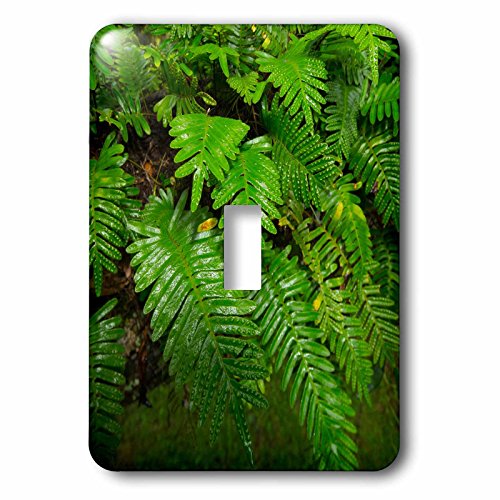Although only a small fraction of non-native species escape cultivation and become invasive, those that do pose a huge threat to the native wildlife and ecosystems of Mississippi. Despite this, many invasive plants in Mississippi are still available for sale at nurseries, landscape centers, and box stores. Others have been banned but can still be found in our gardens and backyards because they were planted there before the ban.
Regardless of how they got there, invasive plants should be removed to prevent them from spreading into the surrounding landscape and causing harm. In their place, you can choose to plant beautiful native species that support native wildlife. The list below includes descriptions of some of the most harmful invasive plants in Mississippi and suggested alternative native plants for each.
Invasive Plants in Mississippi
After reading through this list, take a look around outside to see if you have any of these invasive plants lurking in your yard! If you do find any, don’t panic. Contact your local Extension Office or look up the specific plant online to learn how to remove it properly. Simply cutting it down is often not effective.
1. Bradford pear (Pyrus calleryana)

Bradford pear, sometimes called Callery pear, has a uniform, often pyramidal, shape that has unfortunately made it a popular shade tree. It also produces a profusion of white blossoms in spring, though they have an unpleasant odor. The glossy, ovate leaves have finely serrated edges and long petioles. In fall, the foliage turns bright red and is often accompanied by hard, marble-sized fruits.
Similar native trees include downy serviceberry (Amelanchier arborea) and flowering dogwood (Cornus florida).
2. Chinese and Japanese wisteria (Wisteria sinensis, W. floribunda)
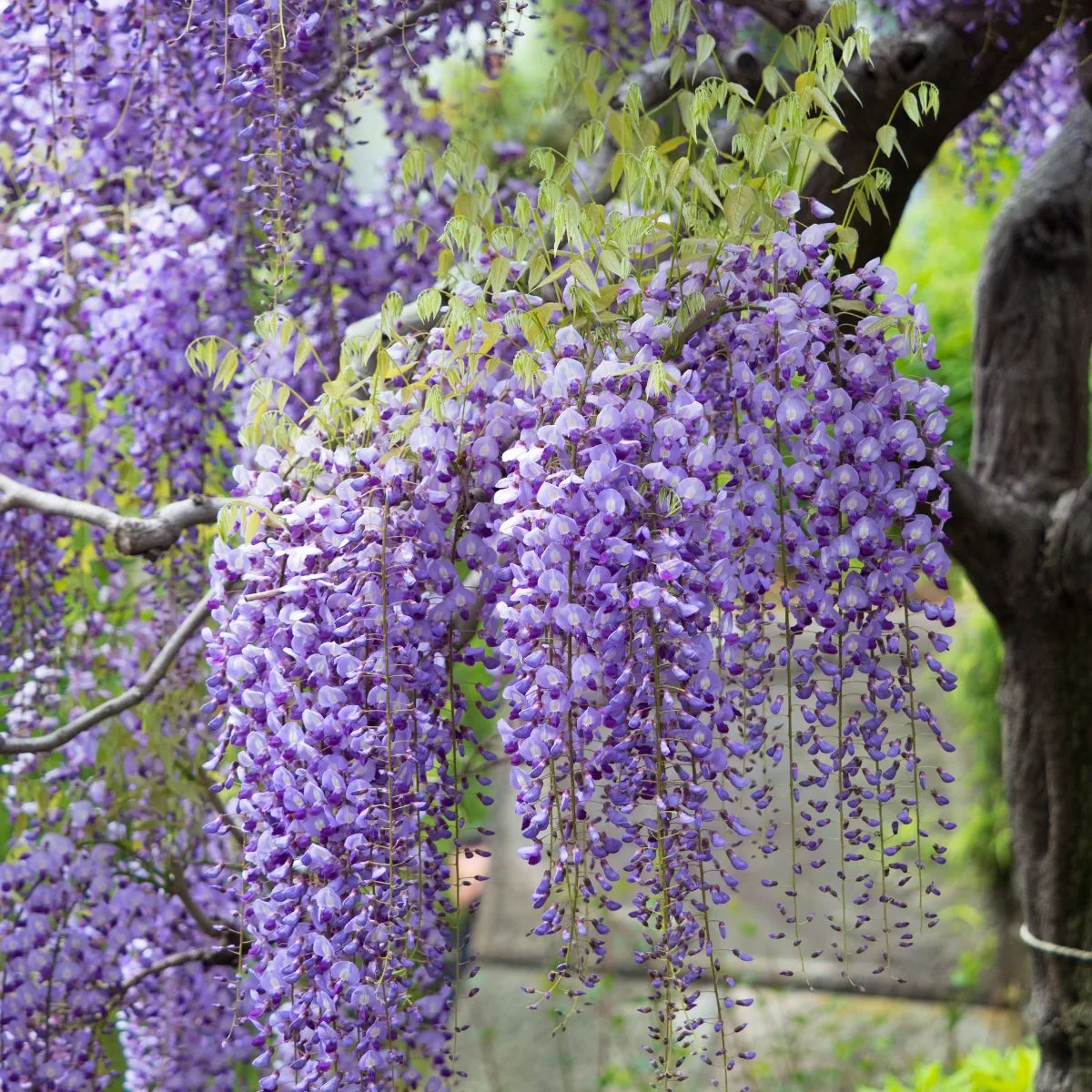
The showy, dangling flower clusters of invasive wisteria grow on vines that can strangle trees and shrubs and damage buildings. Both Chinese and Japanese wisteria are woody vines that can reach 80 feet high. They have alternate, pinnately compound leaves with elliptic to ovate leaflets. In spring, the hanging clusters of fragrant flowers bloom in shades of purple or white. Poisonous, hairy seedpods follow.
Plant American wisteria (W. frutescens) instead, or choose another native vine, like virgin’s bower (Clematis virginiana).
3. Chinese tallow tree (Triadica sebifera)
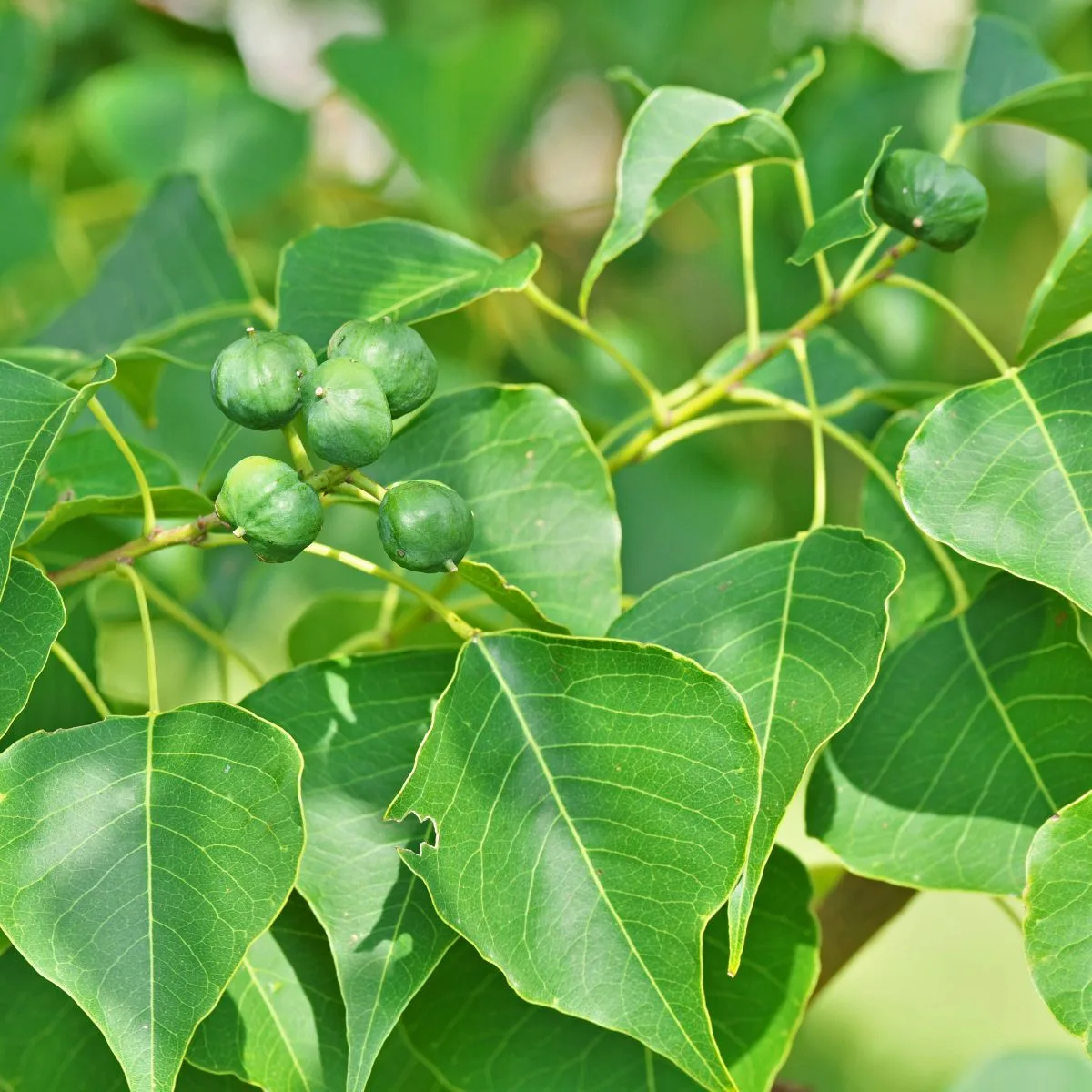
Also fittingly called popcorn tree, Chinese tallow tree is a small tree averaging 20 feet tall. Its alternate, rounded leaves have tapered tips and smooth margins. The dangling spikes of yellow flowers attract bees and other pollinators, and the white, three-lobed fruits that come after greatly resemble popcorn.
Similar small native trees include the dwarf chestnut (Castanea pumila) and fringe tree (Chionanthus virginicus).
4. Cogongrass (Imperata cylindrica)
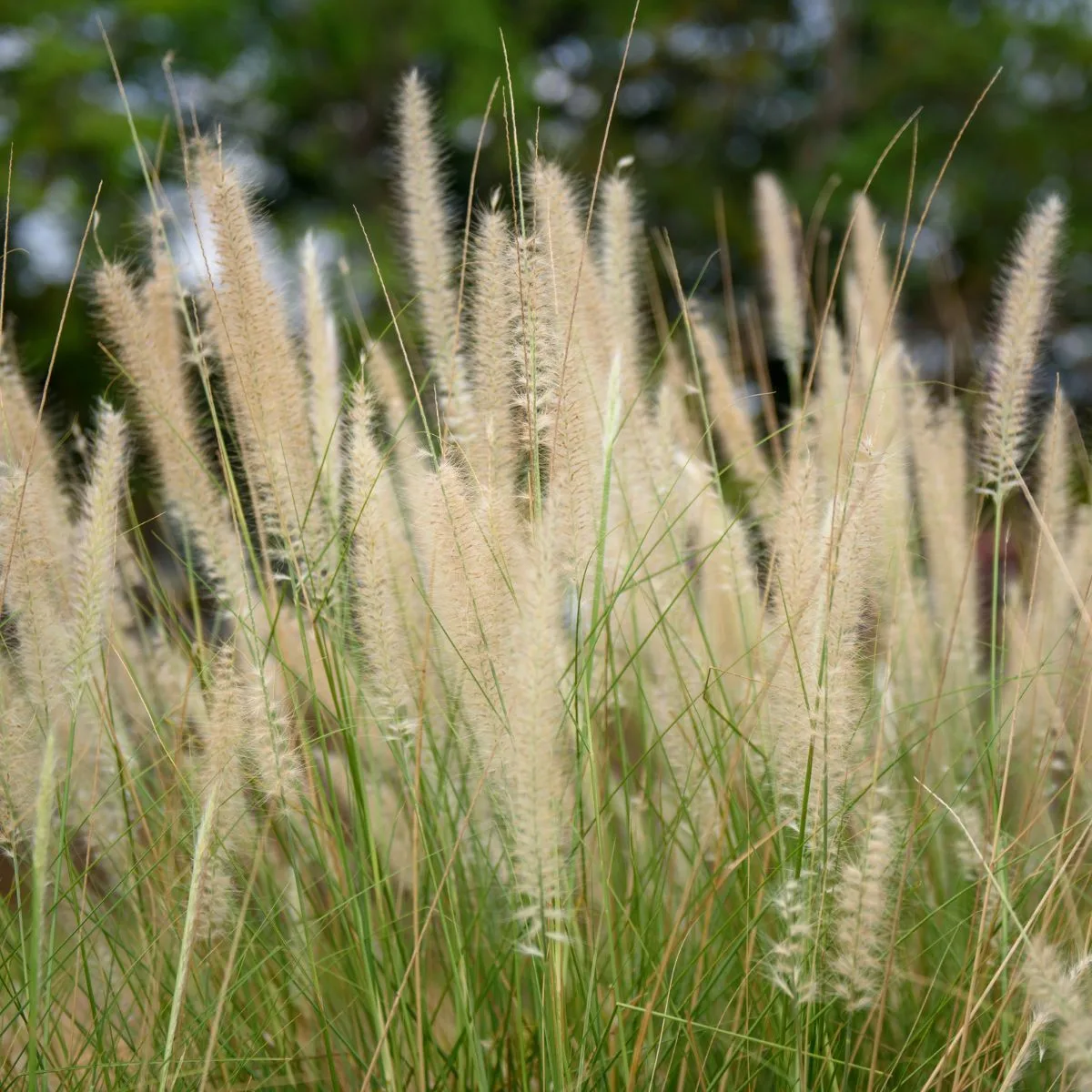
Cogongrass produces smooth, upright stems anywhere from six inches to nearly four feet tall, and its leaves have offset midribs. Its dense growth, both above and belowground, chokes out other plants. Interestingly, cogongrass flowers in early to mid-spring, immediately after transitioning out of dormancy. In contrast, similar native grasses tend to flower well after the spring greenup. Look for feathery plumes formed by the white to silvery hairs attached to the seeds.
Native silver beardgrass (Bothriochloa saccharoides) is similar, and pink Muhly grass (Muhlenbergia capillaris) has very showy flower panicles.
5. Japanese climbing fern (Lygodium japonicum)
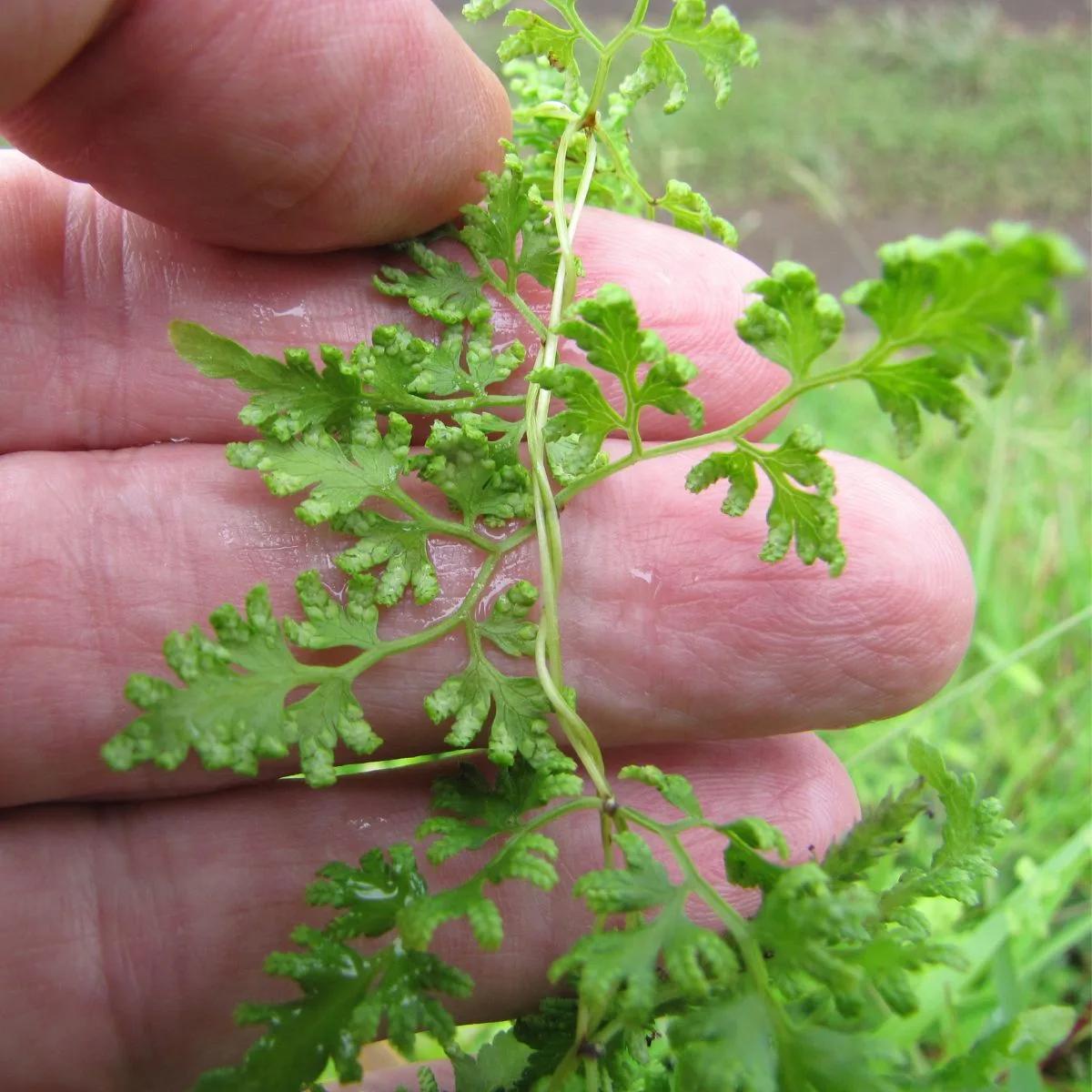
A unique perennial fern, Japanese climbing fern climbs and twines to lengths of up to 90 feet and can form mats over shrubs and trees. The finely divided leaves have a lacey appearance and persist into winter in sheltered places or become brown. The wiry vines come in shades of green, orange, and black. This aggressive fern spreads via creeping rhizomes and wind-dispersed spores.
Southern wood fern (Dryopteris ludoviciana) provides excellent groundcover in shade gardens, and the evergreen resurrection fern (Pleopeltis polypodioides) grows on other plants and rocks without being parasitic.
6. Japanese honeysuckle (Lonicera japonica)
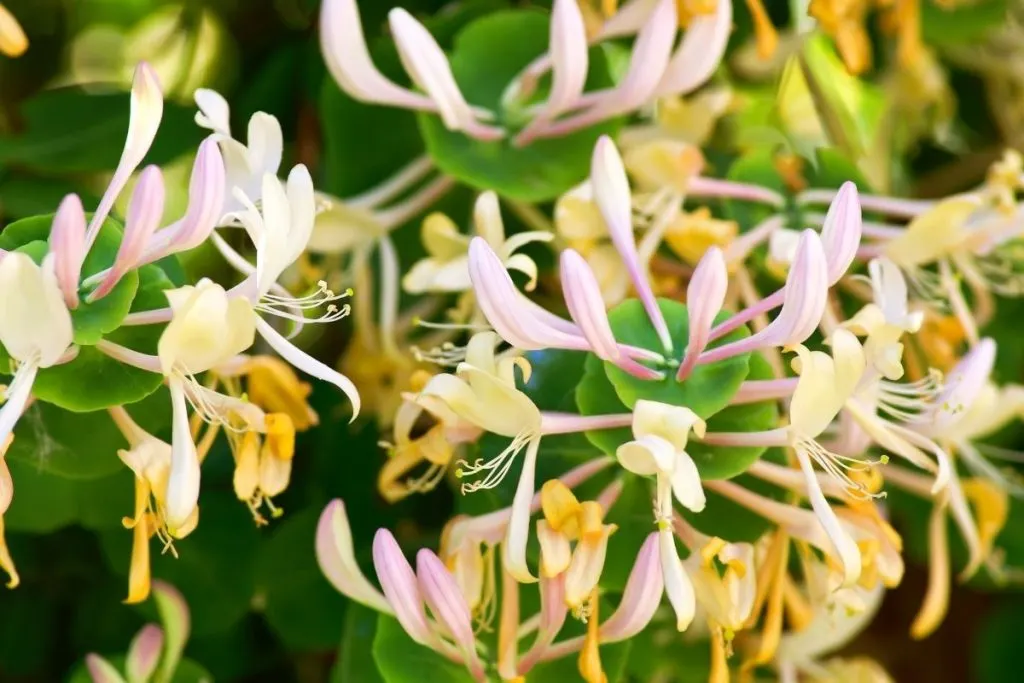
Japanese honeysuckle is a woody, evergreen vine that quickly outcompetes native plants and can even strangle saplings. The young, hairy, copper vines become thick and woody with age, reaching lengths of 80 to 120 feet. Look for opposite, oval leaves and in spring, the sweetly fragrant, tubular, white and yellow flowers.
Plant coral honeysuckle (L. sempervirens) or another native vine, such as trumpet creeper (Campsis radicans), instead.
7. Kudzu (Pueraria montana var. lobata)
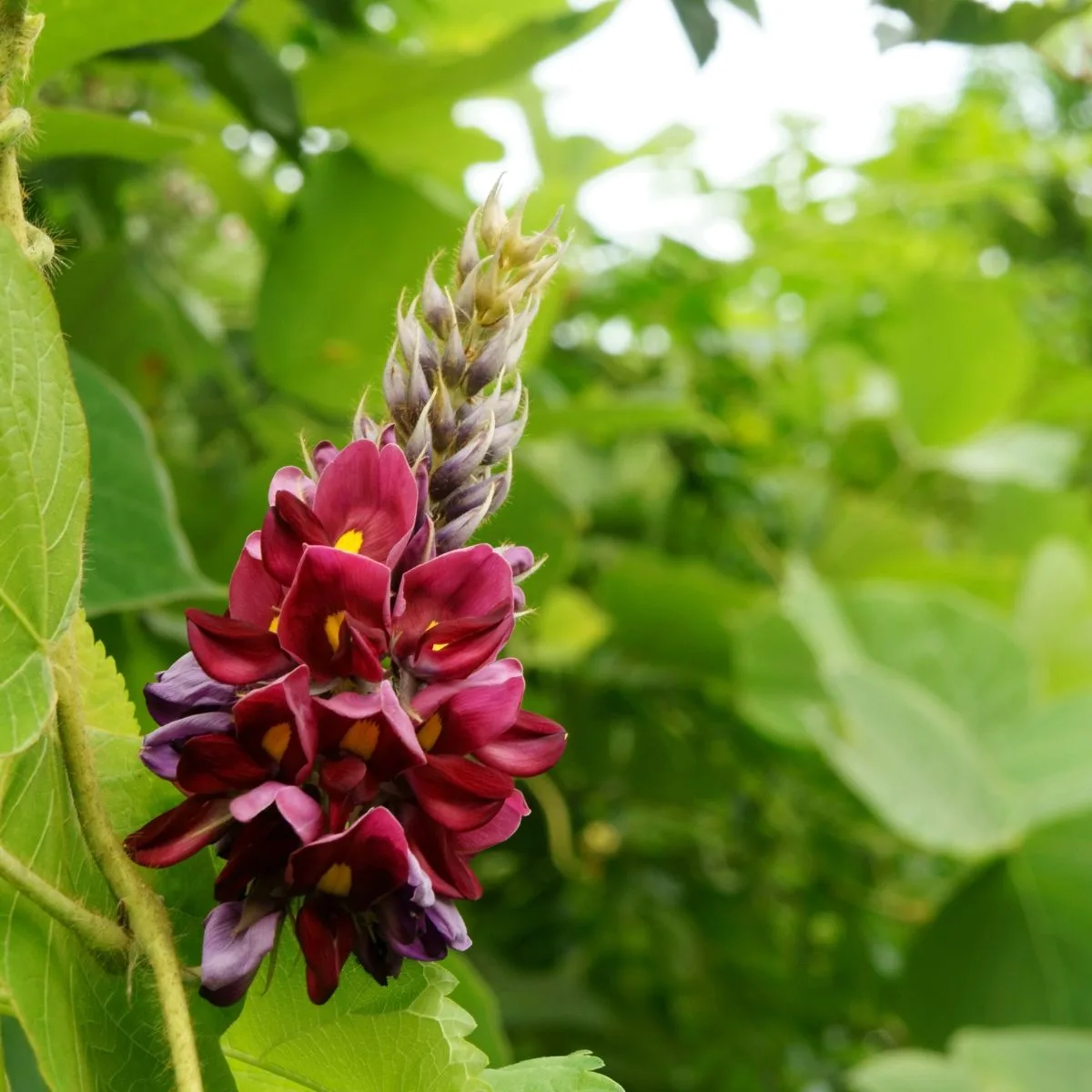
A semiwoody, perennial vine, kudzu climbs and smothers shrubs, trees, and structures. Each compound leaf has three broad, lobed leaflets up to four inches across. In late summer, fragrant purple flowers bloom in long hanging clusters. Hairy, brown seed pods follow. The vines grow as much as 60 feet in a single season, with a large, fleshy taproot that can grow six feet deep.
Alternative native vines include pipevine (Aristolochia macrophylla) and passionflower (Passiflora lutea).
8. Privet (Ligustrum lucidum, L. sinense)
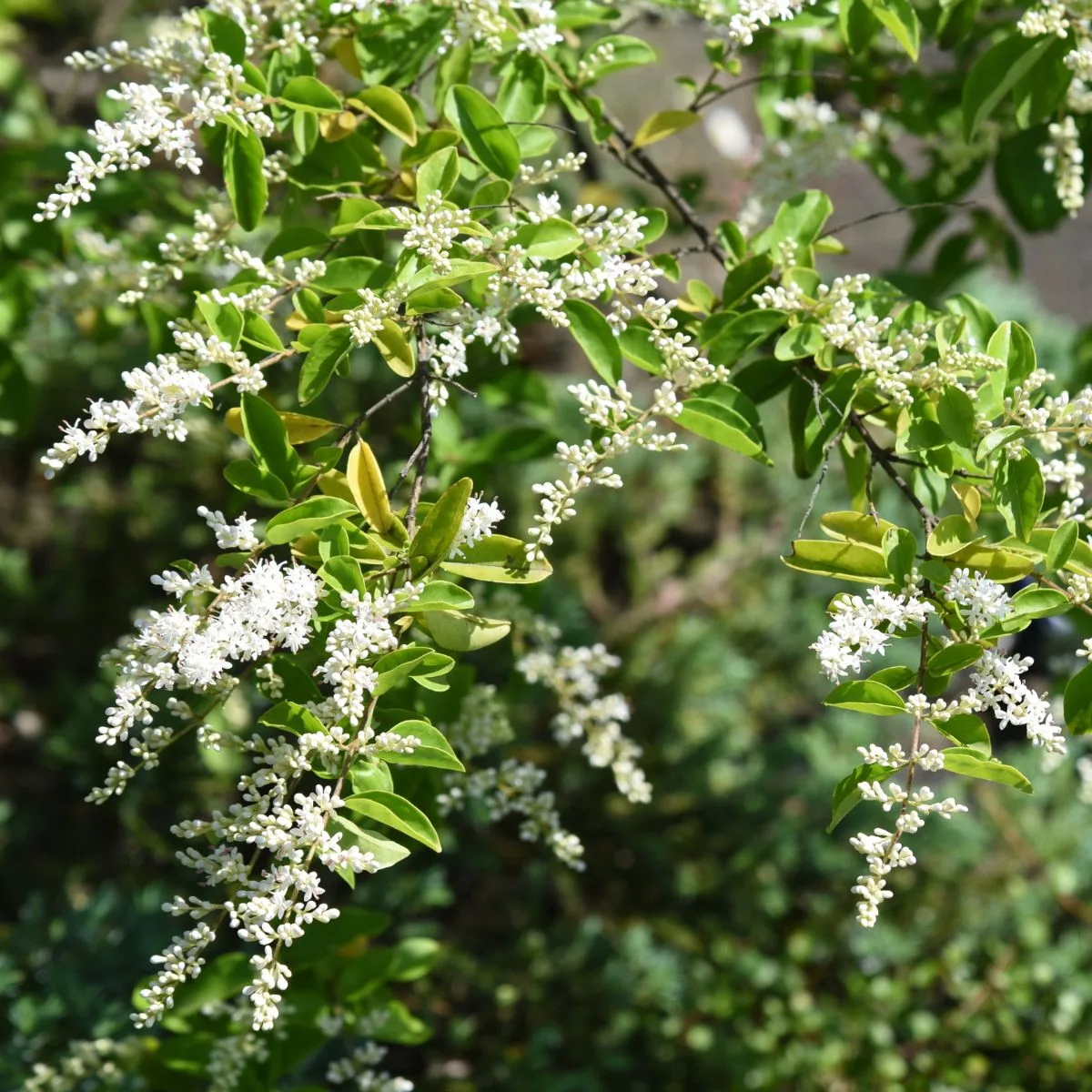
Commonly grown as a hedge, privet is a large shrub with spreading branches. Both Japanese (L. lucidum) and European (L. sinense) privet pose a threat in Mississippi. These perennial shrubs have smooth, grayish bark and opposite, ovate leaves. Clusters of tiny, tubular flowers are followed by oblong, blue to black drupes that persist into winter.
Choose native shrubs instead, such as mapleleaf viburnum (Viburnum acerifolium) or black chokeberry (Aronia melanocarpa).
9. Tree of heaven (Ailanthus altissima)
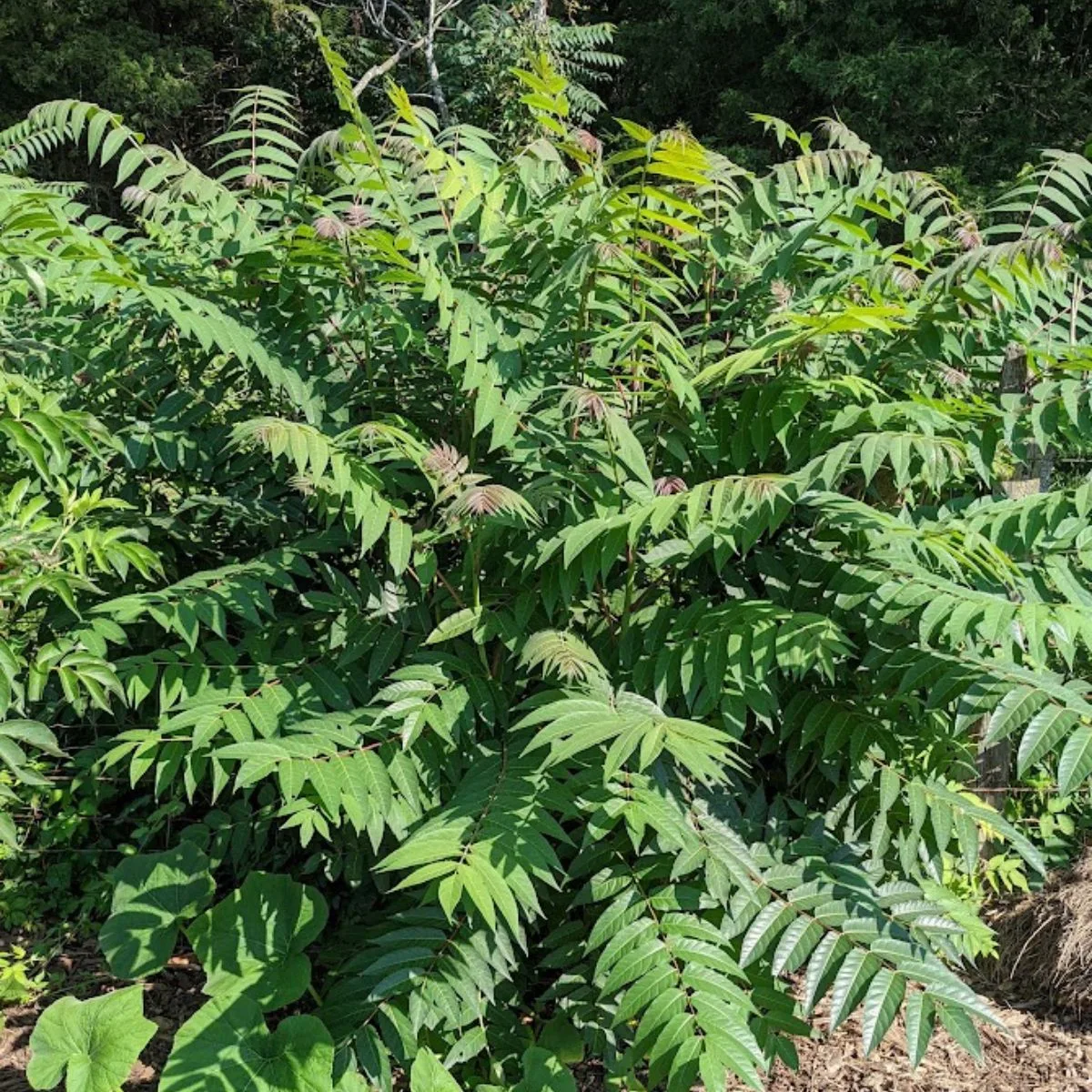
Tree of heaven grows quickly, capable of reaching 50 feet tall in just 25 years. It has smooth, green young stems and gray mature bark with tan fissures. Each bipinnate leaf has as many as 40 lance-shaped leaflets with smooth margins. The tree produces large panicles of yellowish to reddish flowers, and winged seeds persist on female trees into winter. Scratching the bark or crushing leaves will release a pungent odor.
Similar native trees include winged sumac (Rhus copallinum) and box elder (Acer negundo).
10. Trifoliate orange (Poncirus trifoliata)
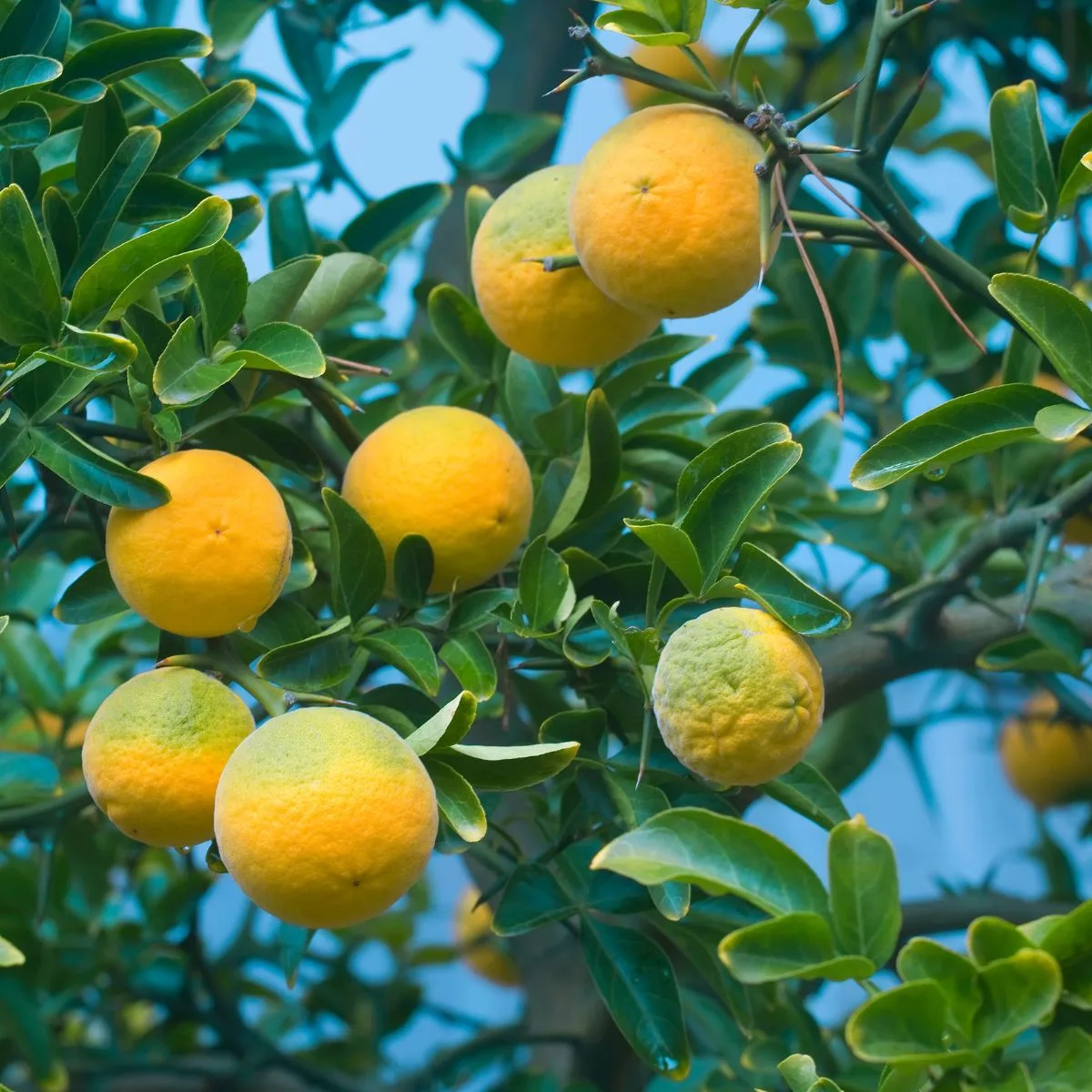
Also called hardy orange, trifoliate orange gets its name from its orange fruit and three-lobed leaves. This thorny shrub grows eight to 15 feet tall, with leaves that emerge yellow-green, mature to dark green, and fall off in autumn. Showy, white spring flowers are followed by bright yellow to orange fruit about one to two and a half inches wide.
Osage orange (Maclura pomifera) has a similar appearance. Another good alternative, American persimmon (Diospyros virginiana) produces edible orange fruits.
If you find any of these plants in your yard, take heart! You can make a difference by properly removing them. And then you get to go plant shopping! Not only do native plants not cause harm like invasives do, but they provide habitat and food for native wildlife, like songbirds and butterflies.
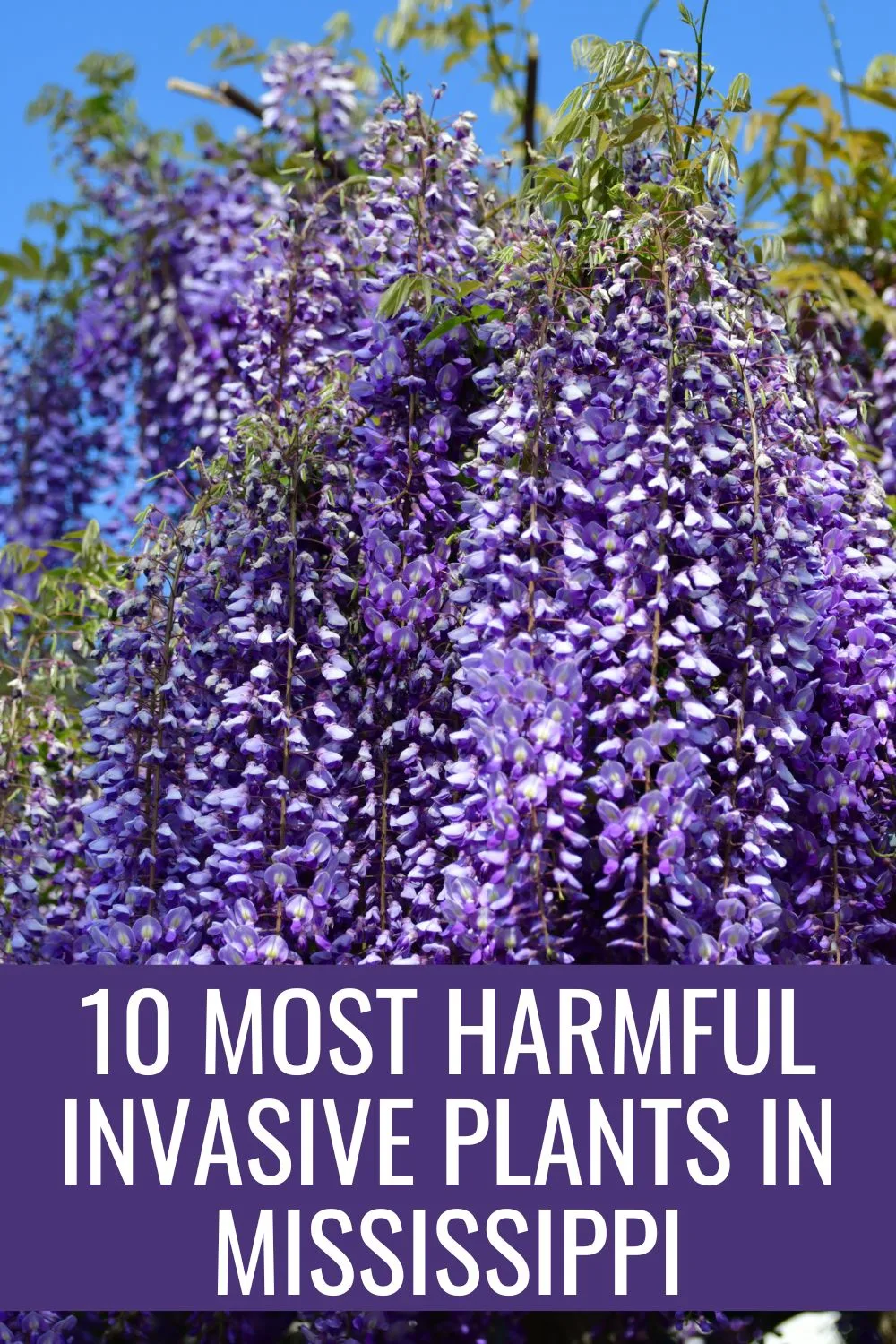
Serena Manickam is a freelance editor and writer and sustainable market gardener in rural Virginia. She holds a BA in environmental science and runs Fairydiddle Farm, a small market garden in which she grows no-spray produce and herbs to sell at a local farmer’s market.





